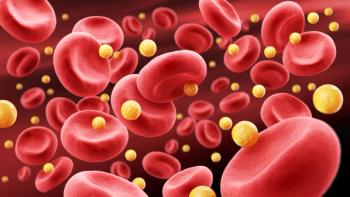
New Guidelines Aim to Prevent Heat Illness in Young Athletes
Young athletes and coaches are urged to use common sense and appropriate measures when practicing or playing on hot, humid days.
As physical conditioning begins for fall sports, pediatricians are advising athletes, parents, and adults who are running practice on hot, humid days to use some common sense and appropriate measures to keep the kids out of danger.
In a revised
“Most healthy children and athletes can safely participate in outdoor sports and activities in a wide range of warm to hot weather, but adults sometimes create situations that are potentially dangerous,” said Stephen G. Rice, MD, FAAP, co-author of the policy statement and a former member of the executive committee of the AAP Council on Sports Medicine and Fitness, in a
Among the recommendations:
- Providing risk-reduction training for coaches, trainers and other adults.
- Ensuring trained staff are available on-site to monitor for and promptly treat heat illness.
- Educating children about preparing for the heat to improve safety and reduce the risk for heat illness.
- Allowing children to gradually adapt to physical activity in the heat.
- Offering time for and encouraging sufficient fluid intake before, during and after exercise.
- Modifying activity as needed given the heat and limitations of individual athletes. Practices and games may need to be canceled or rescheduled to cooler times.
- Providing rest periods of at least 2 hours between same-day contests in warm to hot weather.
- Limiting participation of children who have had a recent illness or have other risk factors that would reduce exercise-heat tolerance.
- Developing and having in place an emergency action plan.
The most notable change in AAP policy is the recognition that children can tolerate and adapt to exercise in heat as well as similarly fit adults, when adequate hydration is maintained. The previous AAP policy, issued in 2000, suggested that children were less able to tolerate and adapt to heat stress compared to adults, but more recent research has found children and adults have similar physiological responses when exercising under the same conditions.
The revised policy focuses on what factors put kids in danger of exertional heat illness and how adults can modify youth athletic activities to minimize heat illness risk. The policy includes a detailed list of risk factors and possible modifications. But the new statement, unlike the previous one, does not give precise rules about whether games or practices should be canceled if temperatures reach a certain level.
“While coaches should make on-the-field decisions to improve safety for a team or event as a whole, individual participants may require more or less concern based on their health status and conditioning,” said co-author Michael F. Bergeron, PhD, FACSM, of Sanford USD Medical Center, in Sioux Falls, South Dakota.
Newsletter
Stay informed on drug updates, treatment guidelines, and pharmacy practice trends—subscribe to Pharmacy Times for weekly clinical insights.


















































































































































































































